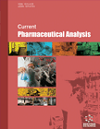
Full text loading...
We use cookies to track usage and preferences.I Understand
Oxaliplatin, a platinum-based antineoplastic agent, is widely used to treat colorectal cancer. It is well-known for its capacity to hinder the development and division of cells, especially fast-dividing ones, like cancer cells, via the creation of DNA adduct. The currently published oxaliplatin analytical methods require a complex, difficult-to-understand procedure, and are costly.
The main objectives of our study were to select the chromatographic parameters, develop a UFLC method and validate it, and validate the results according to ICH guidelines.
In this UFLC study, a normal phase C18 column (250cm x 4.6 mm x5 µm) with a mobile phase containing 0.01 M orthophosphoric acid and acetonitrile (95:5 V/V) has been used at pH 3.5. Flowrate has been fixed at 1ml/min and the sample has been tested in the UV range for detection. The methods have been validated for precision, linearity, forced degradation studies, robustness, and accuracy.
The retention time of the drug has been found to be >8min. The calibration curve of the drug has been obtained within the range of 10–240 µg/ml. The results of this analysis have been validated according to ICH guideline Q2 (R1) for registration of human use.
The UFLC method we have used for oxaliplatin quantification has been found to be simpler, easier to understand, and more cost-effective than standard HPLC as it has consumed less mobile phase and less time. Thus, we can conclude that this new, simple, and easy method may be a useful alternative to the existing standard methods for oxaliplatin.

Article metrics loading...

Full text loading...
References


Data & Media loading...

